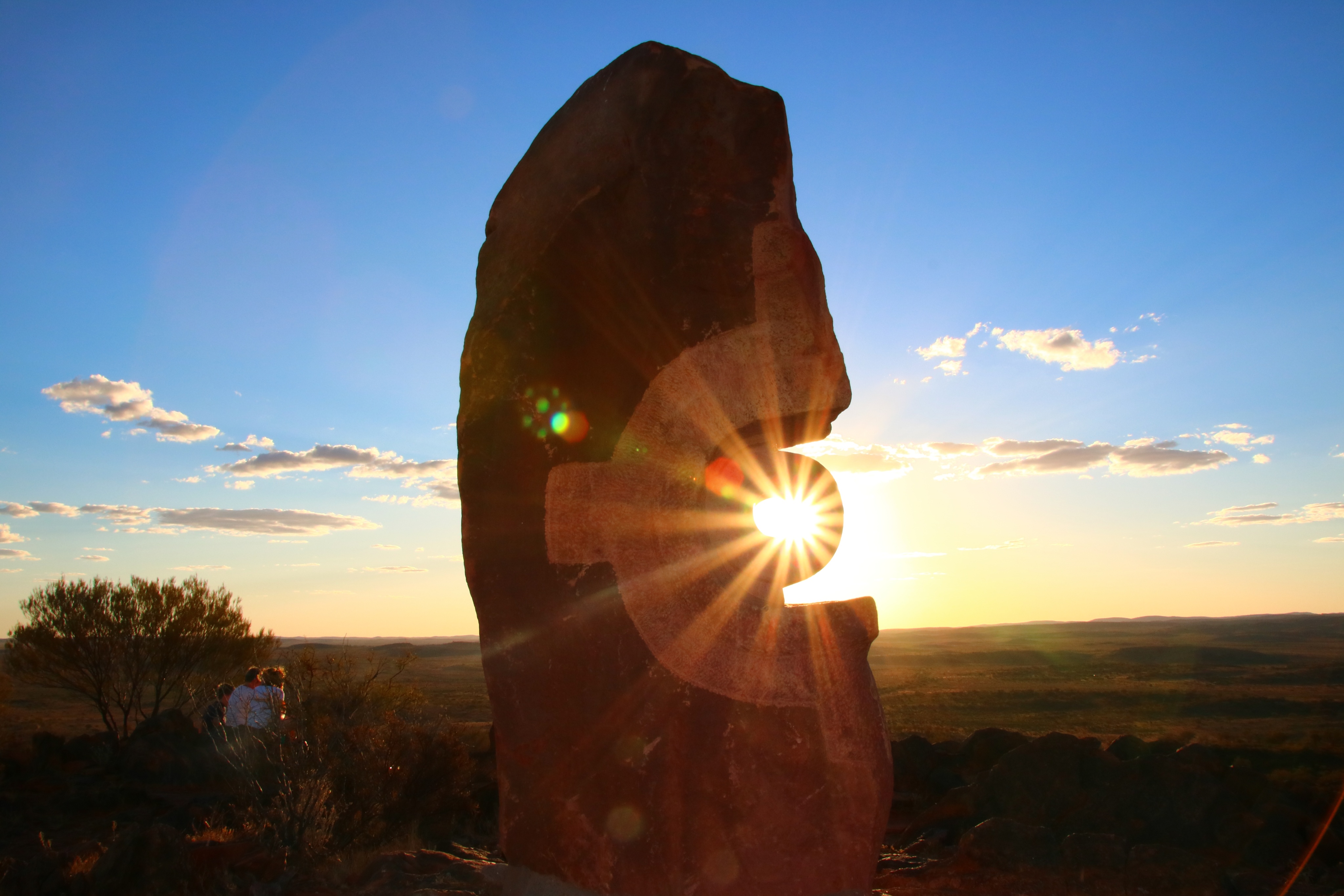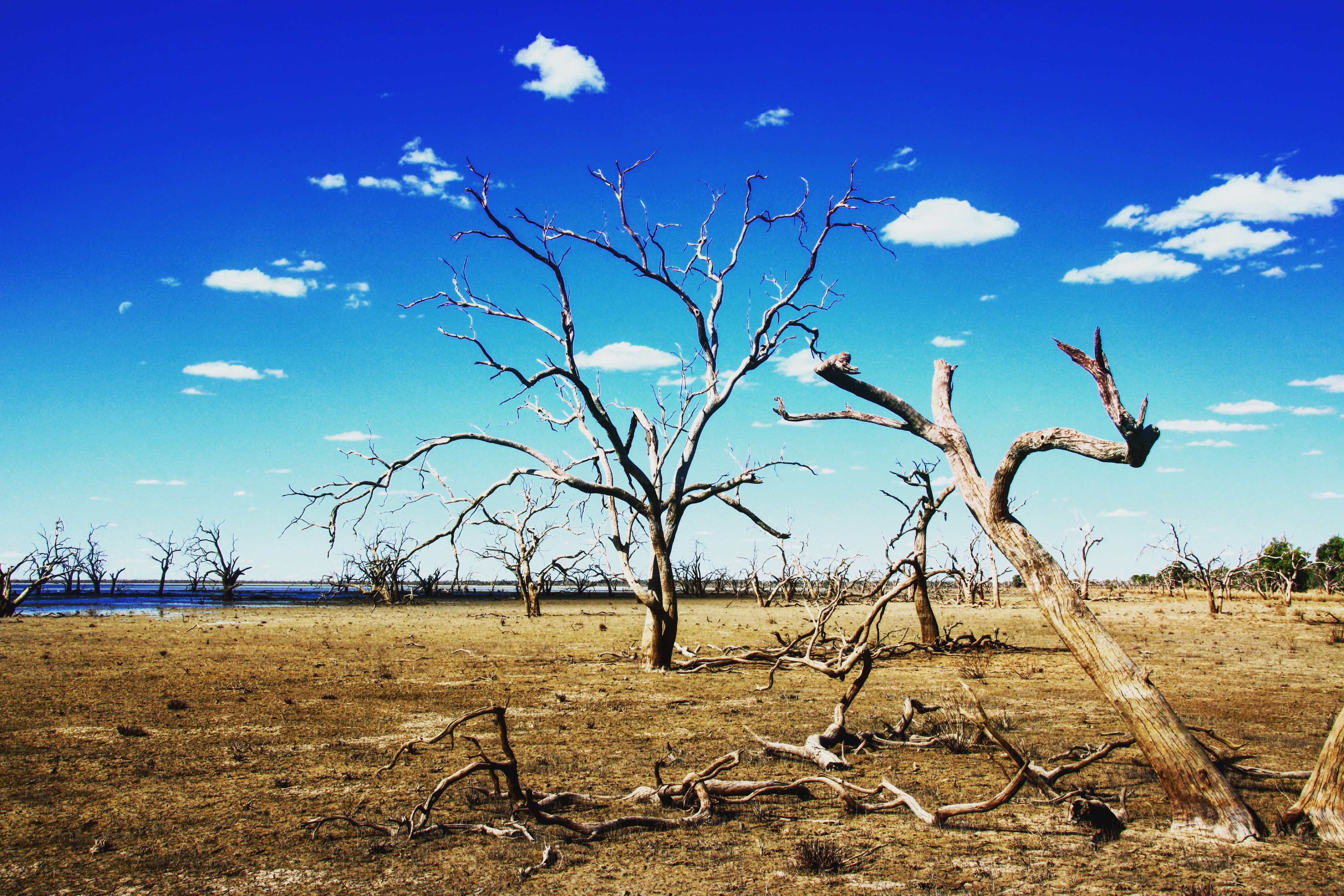Looking at the ocean for one last time on Cape Bridgewater we turn around and head inland. The Great Ocean Road is beautiful but very crowded. We’re dying to get to the outback. We turn onto the Henty Highway. The outback wheat fields start to fill the horizon. The wheat was harvested a while ago but the stumps on the fields are still golden.

We pass through Brim and Patchewollock, tiny communities, where we gaze up in admiration at huge artworks on the silos that dot the landscape. They are connected by the railway that we cross several times. The artworks we see are part of the silo art trail, a spectacular project giving a face to distant communities.

We camp at a great free camp at Lake Lascelles in Hopetoun. There are many low cost or free camp sites in Australia. Some have no facilities, but this one has toilets, showers and even a basic camp kitchen where we can cook sheltered from the wind. The showers are by gold coin donation (the 1 dollar is gold coloured here). You can also get a powered site for twenty dollars or a bunk bed. The campsite was installed by a local committee of volunteers. They wanted to bring their community together and get the water back in the lake. And they did. It’s now a beautiful place to watch the sun set over the water.

When we study our HEMA road atlas, we notice there are pink lakes nearby. So we take a detour towards Linga (left at Walpeup…). At Linga we take a right, cross the railway and dive into Murray Sunset National Park. The lakes are just dry but still a bit muddy around the edges. We take a stroll at two of the lakes in the afternoon light: they are really pink! You can camp here for free with basic pit toilets, beautifully isolated.

Driving on to Mildura, we thought that we couldn’t bring our fruit and veggies across the state border. As Mildura is still in Victoria, we are surprised to find fruit fly quarantine signs some 70 km south of town. We chuck our stock of fruits and veggies in the bins provided on the road, while we had planned to eat them in Mildura. We eat two bananas to save them from the garbage.

Seeing fruit trees as we head into Mildura we understand the quarantine, but it feels a bit over the top. Mildura is set on the Murray river in a totally different landscape. This river was hugely important for the opening up of the outback to white settlers in 1800s. There were even paddle steamers on the river for logging, wool and passenger transport.

The camp site on the Murray river is our base in Mildura. There are huge trees here, red river gum trees. They flourish as the river flooded half a year ago. The water was 2 metres high at the spot where we camp. Pink parrots hop around. We arrive after hours, but we called ahead, and pick up the key from the key safe. We notice that there is quite a crowd on the river beach. After we set up camp there is still a little light left and we decide to check out the beach. There seems to be some kind of show going on. As we come near, however, we suddenly we find ourselves watching aboriginal ceremonies led by a man painted brightly all over.

We understand from the stories told that this is a yearly occasion where for a few weeks ceremonies are held along the Murray and Darling rivers connecting the many Aboriginal communities of the river: dancing the river. Ringbalin – as it is called – brings together dances, songs and stories of river life as well as legends of dreamtime. Young people and elders come together and the dances are actually quite fun and playful. We loved the kangaroo and emu dances!

But there is a serious story behind this as well with the river being colonized and the water being used for agriculture and industry while indigenous history, claims and the health of the river are neglected. It was an honour to attend and we feel very lucky to have been at the right time and the right place to experience a piece of authentic contemporary aboriginal culture. On the coast it is easy to forget that the white settlers weren’t the first people in this country. But in the outback indigenous presence is stronger and the ancient history of aboriginal people can be felt throughout – if you are open to it. More info on www.facebook.com/Ringbalin





